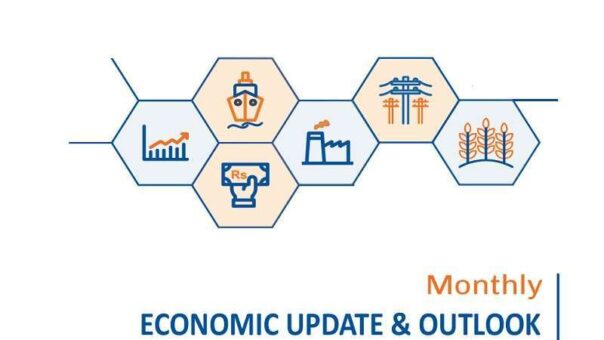Islamabad, July 30, 2024 – The Pakistani economy is showing signs of stability as the fiscal year 2023-24 comes to a close, with declining inflation, a primary fiscal account surplus, a minimal current account deficit, and a stable exchange rate, according to the Finance Ministry’s report released on Tuesday.
The Economic Update and Outlook for July 2024 highlights significant progress in the real sector, with agriculture outperforming expectations and large-scale manufacturing poised for growth. The report notes that in June 2024, Consumer Price Index (CPI) inflation nearly reached single digits, while the external account position improved due to prudent fiscal and monetary management. Exports and remittances have also seen a significant rise.
To further bolster economic stability, the government recently secured a staff-level agreement with the International Monetary Fund (IMF) for a 37-month Extended Fund Facility (EFF) worth $7 billion. This agreement is expected to provide much-needed financial support and confidence to the economy.
Agriculture and Manufacturing Sectors
In FY2024, tractor production surged to 45,529 units, a 43.5% increase from FY2023, while tractor sales rose by 47.0% to 45,494 units. Agricultural credit disbursement reached Rs 1,972.8 billion during July-May FY2024, marking a 26.0% increase from the previous year. However, the report notes a decrease in the sowing area for cotton in Punjab and Sindh due to the cobweb phenomenon.
Large-scale manufacturing (LSM) expanded by 1.0% during July-May FY2024, compared to a 9.6% contraction last year. In May 2024, LSM registered a 7.3% year-on-year growth and a 7.5% month-on-month growth, driven by strong performances in the food, apparel, leather, coke and petroleum products, chemicals, pharmaceuticals, and machinery and equipment sectors.
Inflation and Fiscal Deficit
CPI inflation was recorded at 12.6% year-on-year in June 2024, compared to 11.8% in the previous month and 29.4% in June 2023. The average annual inflation fell to 23.4% in FY2024 from 29.2% last year. The government managed to reduce the fiscal deficit to 4.9% of GDP in July-May FY2024, from 5.5% last year. The primary balance showed a surplus of Rs. 1,620.5 billion (1.5% of GDP) during this period, in contrast to a deficit of Rs. 112.0 billion (-0.1% of GDP) last year, achieved by increasing revenue and controlling non-interest spending.
Trade and Investment
The current account deficit shrank to $0.7 billion in FY2024, down from $3.3 billion last year. Goods exports increased by 11.5% to $31.1 billion, while imports remained steady at $53.2 billion, leading to a reduced trade deficit of $22.1 billion from $24.8 billion last year. Foreign Direct Investment (FDI) rose to $1.9 billion, a 16.9% increase from the previous year.
Pakistan’s total liquid foreign exchange reserves stood at $14.7 billion as of July 12, 2024, with the State Bank of Pakistan holding $9.4 billion. The money supply (M2) increased by 15.5% in FY2024, driven by a significant rise in the banking sector’s net foreign assets.
Social Initiatives and Future Prospects
In May 2024, the Pakistan Poverty Alleviation Fund disbursed 28,913 interest-free loans totaling Rs 1.38 billion through its 24 partner organizations. From February 2023 to March 2024, the government disbursed Rs 83.683 billion under the Prime Minister Youth Business & Agriculture Loan Scheme. Despite limited fiscal space, the government is taking measures to mitigate inflation’s impact on vulnerable populations, including a three-month electricity subsidy for users of up to 200 units.
Looking ahead, the agriculture sector’s growth target is set at 2% for the current fiscal year. The recovery in large-scale manufacturing is expected to continue, supported by a stable exchange rate, macroeconomic stability, and relaxed import restrictions. Inflation is projected to range between 12.0-13.0% in July 2024 and 11.0-12.0% in August 2024. Exports and imports are expected to remain within the ranges of $2.4-2.7 billion and $4.5-4.9 billion, respectively, in July 2024. The report emphasizes that revived domestic economic activities, better agricultural output, a stable exchange rate, improved foreign demand, and low global commodity prices will be crucial for external sector stability.
